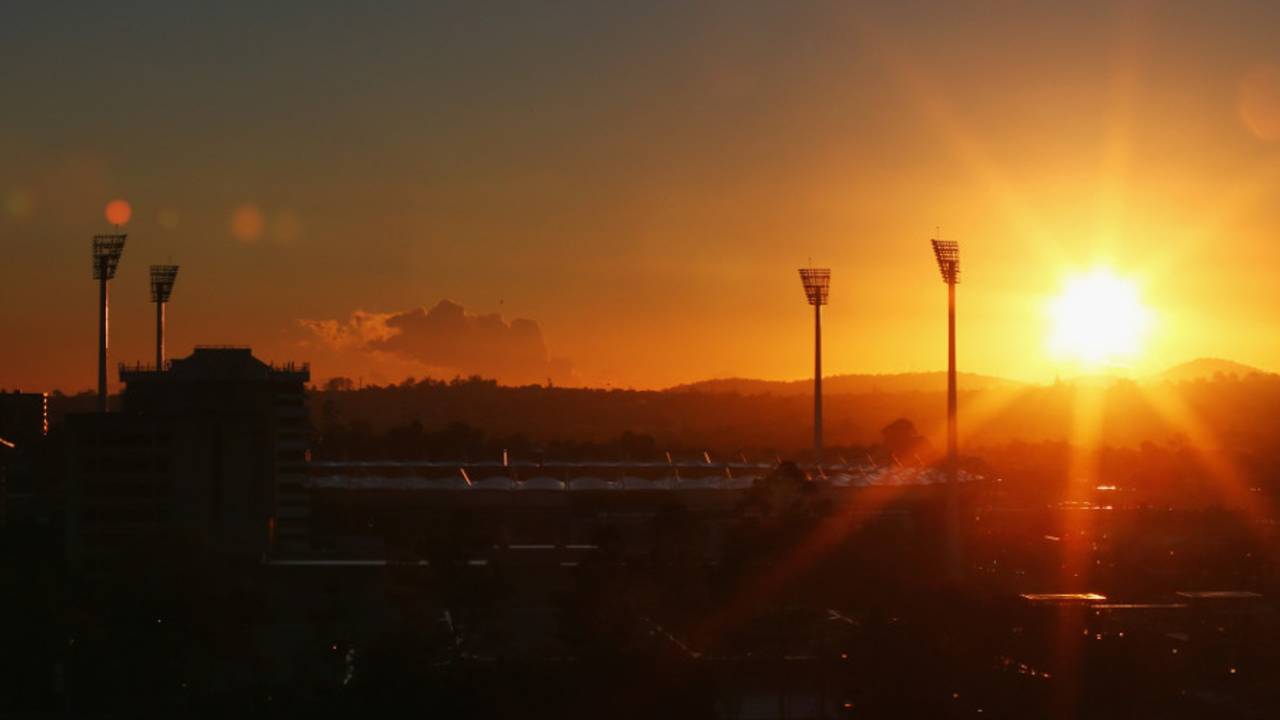So that's it, then. Not even halfway into the World Cup and it has seen the last of Brisbane and the Gabba. Three matches scheduled, one washed out, around 15,000 spectators in total and two tightly-contested matches in conditions that were quintessentially Australian. Like Gabba's habitual place as the first Test of summer, it was over quickly. Unlike the Test schedule, it had nothing like the usual importance.
Brisbane's allocation was the bare minimum that could be expected of such a storied ground, worse than that granted to the embattled WACA Ground, which is in some doubt of even hosting Test matches in future. It was also identical to the number of matches assigned to the Gabba in the 1992 tournament. The rained-off encounter between Australia and Bangladesh was a shame for those spectators who had bought tickets - a crowd of nearly 30,000 was anticipated - but it also summed up the damp squib that the ground was dealt.
Brisbane's more prominent place in the scheme of the regular Australian cricket season is assured for largely the same reason that Test cricket has for so long been enshrined as the pinnacle of the global game - the players want it that way. Heaven help any Australian administrator who dares to tell the national captain, whoever he is, that the Gabba will not be allocated a Test match early in the home summer.
It is a venue the players love for its local advantages of pace and bounce, and a place where the arch aggression of the Australian team in excelsis can be given full vent. Try imagining Michael Clarke telling James Anderson to "get ready for a broken f***ing arm" in Adelaide or Hobart? Not so easy is it.
But the World Cup is a different event, not scheduled directly by Cricket Australia in conjunction with the states. Rather the process was a more multi-layered exercise taking in the ICC, the tournament's local organising committee, CA, the state associations and governments both federal and state-based. It was an ordeal more involved than is typical for each ground, and the allocation of sought-after matches required plenty of lobbying.
This was where the Gabba fell back in the order of preference. Whereas Melbourne and Sydney held obvious advantages in terms of population and centrality, Adelaide and the South Australian government pushed hard and at some length for a big ticket pool match - India versus Pakistan - and a place in the knockout round. By contrast, the austerity of the now departed Campbell Newman-led LNP government in Queensland left very little room for the Gabba to spruik its wares. It is believed that haggling went down even to issues like who would pay for the ground's security detail and catering, with a fledgling and budget conscious government showing very little interest in using the tournament to showcase their state's virtues.
There was perhaps also an element of complacency about things. Brisbane was the first venue outside Sydney and Melbourne to accede to major upgrade work in the mid-1990s. Driven largely by the move of the Brisbane Bears (now Lions) AFL club to the Gabba, this turned the ground into the most advanced stadium hosting Australian cricket matches 15 years ago, and at the head of the queue for most scheduling scraps left over after Melbourne and Sydney had taken the major share.
Other grounds around Australia were actually ushered towards their own upgrades by Brisbane's example. Adelaide Oval's change from a picturesque cricket ground into a gargantuan stadium with lights and a drop-in pitch can be traced largely to the fact that the Gabba's growth had begun to threaten the SACA's rights to the matches it expected. After years of setting the pace, Brisbane has now been superseded in a few senses, with the potpourri seats, press facilities and stadium amenities all starting to feel just a little dated next to more recent improvements in Adelaide, Melbourne, Sydney and even Hobart's Bellerive Oval.
So when the World Cup schedule was announced in mid-2013, Brisbane lost out largely to Adelaide. This apparently came as quite a shock to the state government, even if little had been done to ensure the Gabba's primacy. The greatest pity of it all is not that Adelaide Oval has been allowed two showpiece days to Brisbane's zero, but that arguably the best and most distinctive pitch in the country has played host to very few of the world's best players at a tournament purporting to show how vibrant cricket can be when played down under.
Instead, five of the Cup's seven knockout matches are destined to be played on drop-in pitches both here and in New Zealand, a stark illustration that the preferences of the players come a distant second to commercial and corporate expedience when a global event is being knitted together. To watch Mohammad Irfan and Wahab Riaz revel in the bounce and zip they could extract from the Gabba was to wish that all parties concerned had taken the liberty of thinking a little more about which venues were likely to produce vibrant cricket as well as fat revenues.
There has since been plenty of hand-wringing in Brisbane over the bidding - or lack thereof - for World Cup matches, and a far more concerted effort from the new Labor government is expected to pursue the next major trinket being handed out by CA, namely a historic day/night Test against the resurgent New Zealand in the first half of the 2015-16 summer. That contest will again be supported by the Gabba's greatest virtue, the 22 yards at its centre, and the national team's strong attachment to it.
Daniel Brettig is an assistant editor at ESPNcricinfo. @danbrettig
